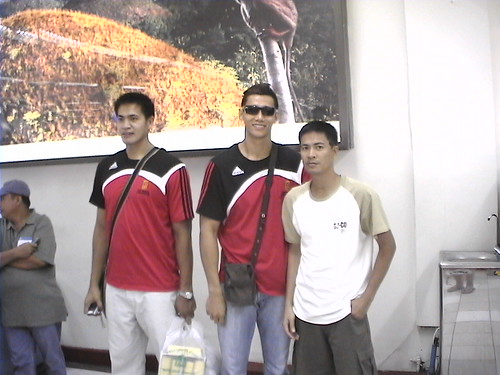Things to check:
Radiator coolant. Check the plastic overflow bottle, attached by a hose to the radiator. if the level is below the Full mark, add water and antifreeze in equal amounts. If the level keeps dropping, check for leaks.
Oil Level. park the car on level ground wait a few minutes. Then pull out and wipe the dipstick and reinsert it. If the level is below the Add line, add enough oil to bring the level to Full mark. Don't overfill.
Things to do:
Keep the body clean. Dirt and pollutants are tough on paint. Wash the car every week, using enough water to avoid scratching the paint. Hose out the fender wells and undercarriage with a strong spray to dislodge accumulated dirt and road salt, which can cause corrosion. When water beads on the body panels become larger than a quarter, wax the body to protect the paint from tree sap, bird droppings and other damaging dirt.
Things to Check Monthly
Things to check:
Tire pressure. Check with an accurate gauge when the tires are cold. (Don't trust the air-pump gauges at service stations, as they tend to be very inaccurate.) See your car owner's manual or label in the glove compartment or on the driver's doorpost for recommended pressures. And don't forget the spare.
Automatic transmission fluid. Check the fluid level and color, using the transmission dipstick (See the owner's manual for details.) If the level is low, add fluid to between the Add and Full marks. If the fluid is brown or black or smells burnt, change the fluid and filter. If the fluid is sickly white or pale, the transmission oil-cooler may need repair.
Power steering fluid. check the level with the dipstick (usually attached to the fluid reservoir cap). If the level is low, top it up and have the system checked for leaks.
Brake fluid. Check the level in the master cylinder. (Wipe the cap clean before removing it.) If the fluid level is low, top it up and have the system checked for leaks.
Battery. On a low-maintenance battery, pry off the covers or unscrew the caps. If necessary, add distilled water. If the battery has an "eye", check its color. If the eye is green or blue, the battery is OK. If it's black, have the battery tested and charged. If it's pale or yellow, replace the battery.
Things To Check and Do at Each Oil Change
Things to check:
Tires. Check for cuts and bulges, signs of an imminent blowout. Don't worry about fine surface cracks.
Differential fluid. On rear-wheel-drive cars, remove the plug in the differential and feel for fluid with your little finger. If you don't feel any, add fluid until you can and have the system checked.
Air filter. Remove the air-filter cover and hold the filter up to the sun or a bright light. If you don't see light through the element, replace the filter.
Cooling-system hoses. At each oil change, squeeze the hoses when the engine is cold. Replace the hoses if you find cracks or hard or mushy areas. Then start the engine and watch the hoses. Replace them if they bulge while the engine is running.
source: motorzone.com.my
Car Breakdown Prevention
Breakdowns Can Be Very Annoying
Don't let a highway breakdown ruin your trip to balik kampung. Be prepared, to help increase your chances of arriving on time and safe and sound. Preventive maintenance is a must. A well maintained vehicle is more enjoyable to drive, will last longer, and should command a higher resale price.
Read your owner's manual and follow the manufacturer's recommended service schedules.
Engine Performance -- Get engine driveability problems (hard starts, rough idling, stalling, diminished power, etc.) corrected at a good repair shop. Replace dirty filters (air, fuel, PCV, etc.).
Fuel -- Note that a gas tank that is kept filled helps keep moisture from forming.
Oil -- Change your oil and oil filter as specified in your manual -- more often if your driving is mostly stop-and-go or consists of frequent short trips.
Cooling System -- The cooling system should be flushed and refilled as recommended. The level, condition, and concentration of the coolant should be checked periodically. Never remove the radiator cap until the engine has thoroughly cooled! The tightness and condition of drive belts, clamps, and hoses should be checked by a pro.
Windshield Wipers -- Replace old blades. U know lah here in malaysia it rains lembu and gajah even worse than raining cats and dogs..
Battery -- The only accurate way to detect a weak battery is with professional equipment. Routine care: Scrape away corrosion from posts and cable connections; clean all surfaces; re-tighten all connections. Avoid contact with corrosive deposits and battery acid. Wear eye protection and rubber gloves. If battery caps are removable, check fluid level monthly. Note that removal of cables can cause damage or loss of data/codes on some newer vehicles, so be sure to check your manual.
Lights -- Inspect all lights and bulbs; replace burned out bulbs; periodically clean road grime from all lenses. To prevent scratching, never use a dry rag.
Exhaust System -- Your vehicle should be placed on a lift and the exhaust system examined for leaks. The trunk and floorboards should be inspected for small holes. Exhaust fumes can be deadly.
Tires -- Examine tires for remaining tread life, uneven wearing, and cupping; check the sidewalls for cuts and nicks. Check tire pressure once a month. Let the tires "cool down" before checking the pressure. Rotate as recommended. Don't forget your spare, and be sure the jack is in good condition.
Emergencies -- Carry gloves, boots, blankets, flares, a small shovel, sand or kitty litter, tire chains, a flashlight, and a cell phone. Put a few "high-energy" snacks in your glove box.
Yeah keep some ''safety rubber glove'' too , u never know when u might need it..

No comments:
Post a Comment